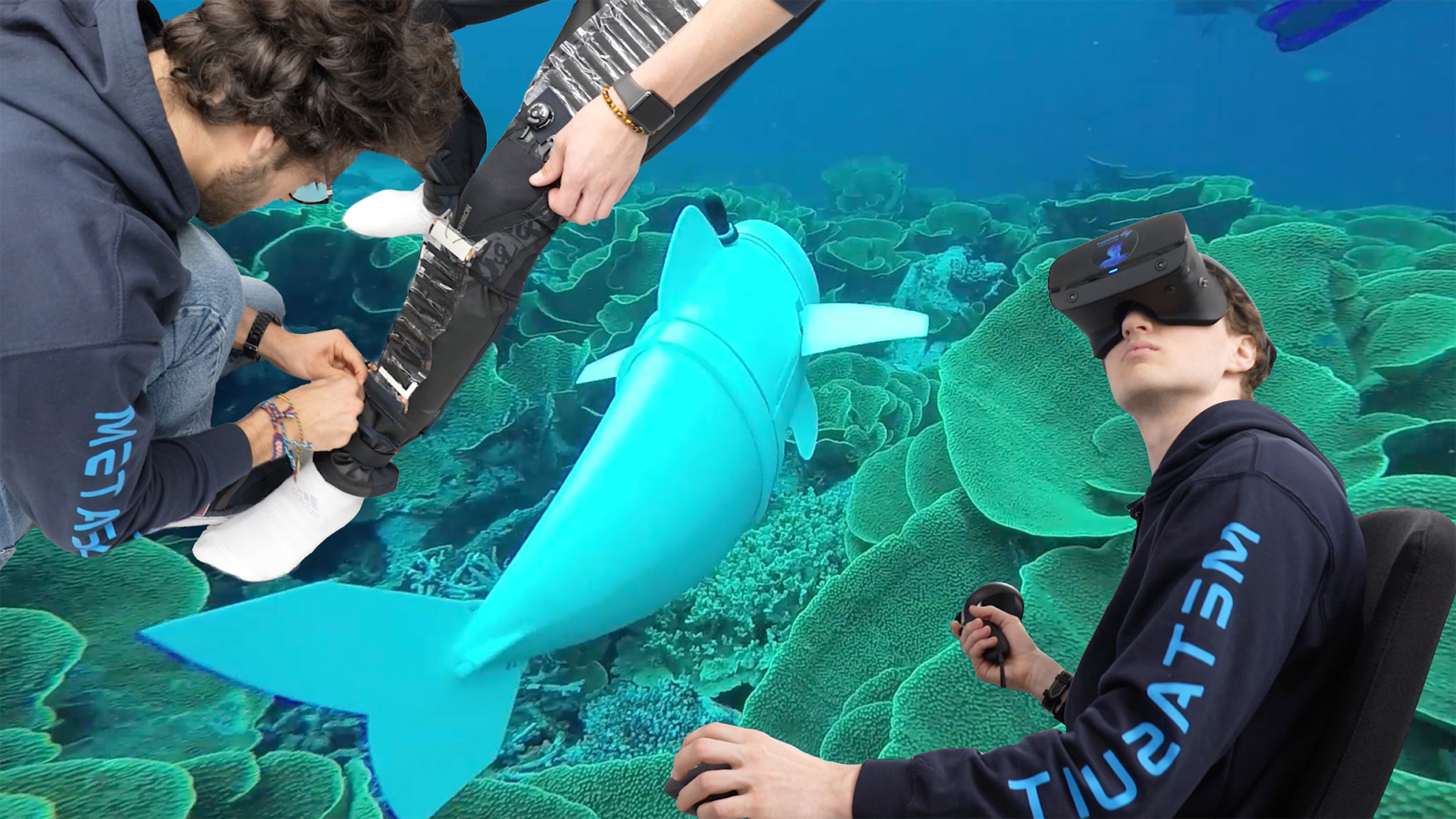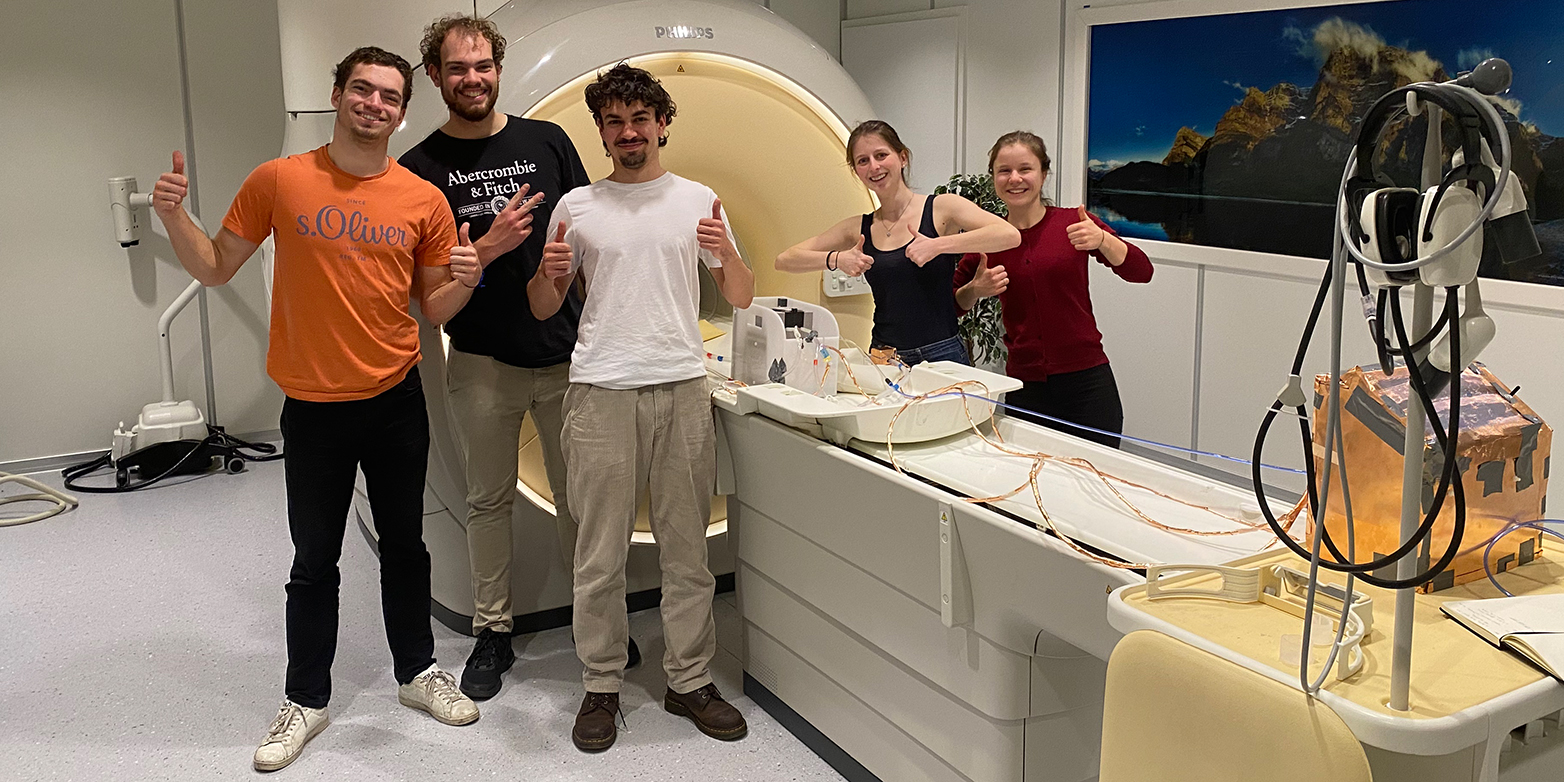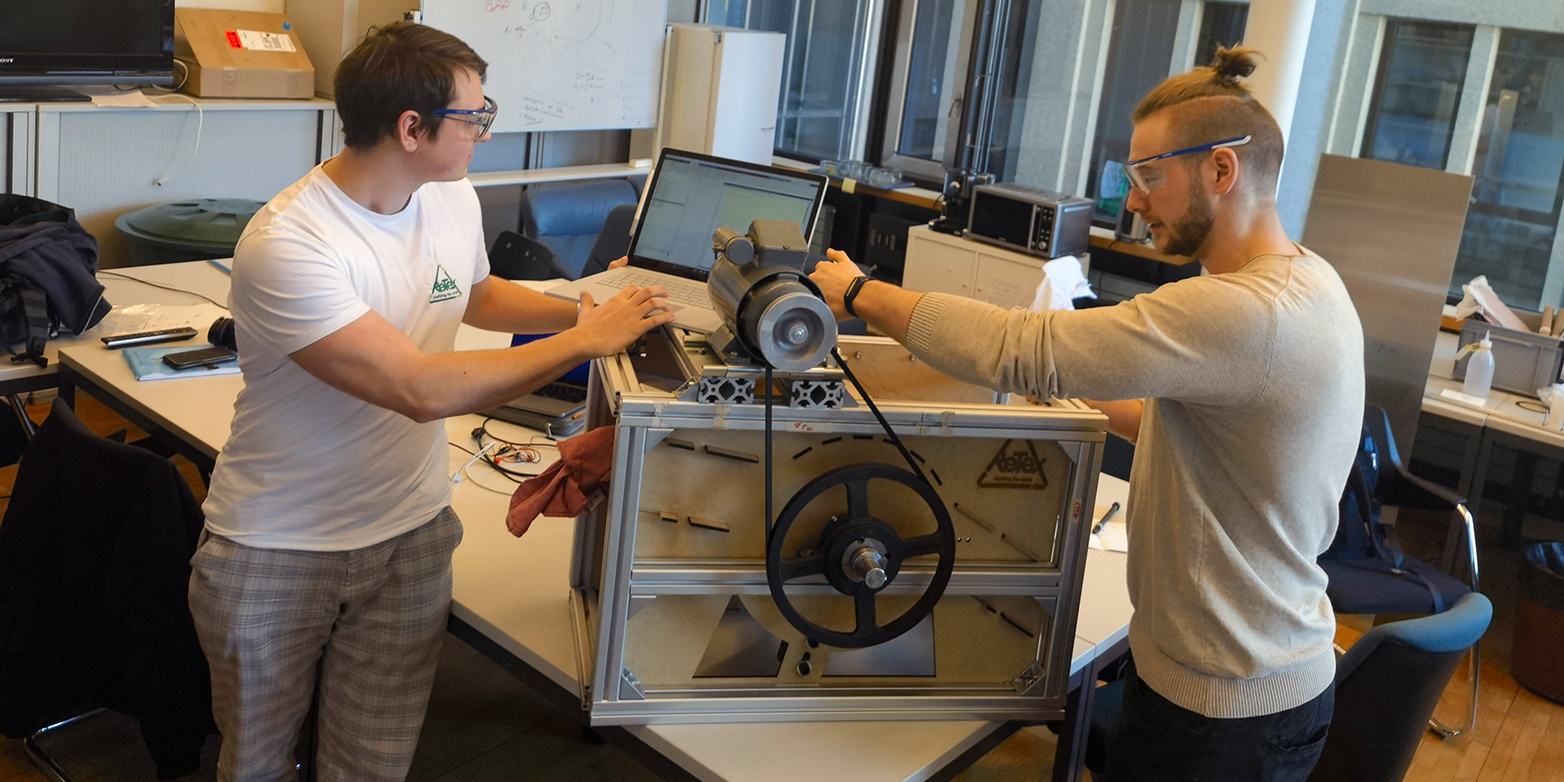From robotic fish to artificial muscles
Bachelor’s students at ETH Zurich were given a year to turn their original ideas into finished products. ETH News presents videos of two of these projects.

A robot that moves like a fish, a suit with artificial muscles, a heart-lung machine for babies, and a technique for spinning yarn out of used clothing – these are just four of the ideas that ETH Zurich Bachelor’s students of Mechanical Engineering have pursued as part of focus projects over the past year. On 30 May, the teams will present their products to the public.
For the SURF-eDNA project, students are developing an autonomous underwater robot that moves like a fish and does so virtually noiselessly. This robot can film underwater and collect samples that provide a picture of which organisms live in a given environment. It has a built-in filter with which it collects fragments of DNA present in the water. The robot is propelled by a silicone fin, into which water is pumped in cycles. As the robot can move almost silently, it can be deployed in sensitive ecosystems without disrupting them.
The students belonging to the MetaSuit project want to make virtual reality (VR) a full-body experience: they are developing a suit complete with artificial muscles. Wearers can immerse themselves in virtual worlds and get haptic feedback – for instance, by feeling resistance on their arms. In this way, the suit opens up new VR experiences that could be attractive to the film industry as well as to the medical sector for rehabilitation treatments.
The byPulse team are tackling a problem that arises when babies or toddlers have to undergo heart surgery. A heart-lung machine helps keep these young patients alive during their operation. But achieving the optimum setup for such machines is not easy – one incorrect setting can cause lasting brain damage. The students are developing a heart-lung machine that can be operated while blood flow in the brain is monitored using magnetic resonance imaging (MRI). They hope this kind of monitoring will reveal what parameters need to be adjusted to reduce the number of cases of infant brain damage resulting from this kind of surgery. Since the heart-lung machines currently on the market contain metal components and electric motors, they are not compatible with the magnetic field generated by MRI machines.
In the ReTex project, students are attempting to get the clothing industry in shape for a circular economy. The team is developing ways of recovering textile fibres from used clothing and spinning these into high-quality yarn. Today, only one in every hundred items of clothing is worn again second-hand. The rest are either shredded for use as insulation material or end up in landfills. The team hopes that their new technology will help make the textile industry more sustainable.
Run by Bachelor’s students of mechanical engineering and electrical engineering, the focus projects provide an opportunity to put theory into practice. Working in teams, the students have two semesters to turn an idea into an innovative product. They manage all stages of product development themselves – from concept and design to manufacture and marketing. At the end of the two semesters, the students present their projects at the Focus Rollout.
Other focus projects in 2022/23
- external page aCentauri is building a solar-powered racing car designed to complete the 3,000 kilometre course at the World Solar Challenge in Australia in October 2023. In addition to being aerodynamic, the car is also stable enough to withstand strong crosswinds.
- external page Cellsius Project H2 is developing a propulsion system for small aircraft that uses a hydrogen fuel cell to power an electric motor. Hydrogen opens up the possibility of carbon-free flight, short refuelling times and long ranges.
- Cito Libra is developing a driverless electric motorcycle. Gyroscopes ensure that the two-wheeler remains stable. Potential future applications include autonomous two-wheelers and improved stabilisation for conventional motorcycles.
- eXact is building a fully electric – and thus quieter – excavator. Whereas the grappler arm on today’s excavators is powered by hydraulics, the ETH team is using electric linear drives that are particularly efficient.
- external page Formula Student Electric is developing an electric racing car to compete in Formula Student competitions against cars designed by student teams from other European universities. Named “Castor”, the team’s racing car has an entirely original design.
- magnecko is developing a four-legged robot whose magnetic feet allow it to climb up steel structures. The idea is for the robot to help with safety inspections of these structures in the future.
- external page PROMETHEUS is developing a rocket engine powered by ethanol and liquid oxygen as part of the ARIS student project. In the next few years, PROMETHEUS aims to launch a rocket powered by this engine into space as part of a student competition.
- SONANO is developing new contrast agents for optoacoustics, a new and comparatively inexpensive method of medical imaging. Based on gold nanoparticles, these contrast agents should help make it easier to detect tumours in breast tissue.
- external page swissloop is developing a Hyperloop high-speed transport system that will enable goods and people to be transported faster and in a more climate-friendly way than by air. The students are building a new type of linear motor and an energy-efficient floating system.
Focus Rollout
The students will present their projects as part of a public exhibition: Tuesday, 30 May, 12 noon to 5.30 p.m., LEE Building, floor E, Leonhardstrasse 21, Zurich
There will also be an event at which the students will provide background information about their projects: Tuesday, 30 May, 1.30 p.m. to 4.30 p.m., external page livestream
More about Focus Rollout



